The Myth of Venice. From Hayez to the Biennale
- When: October 30, 2021 - March 13, 2022
- this event is ended
- Place: Novara, Castello Visconteo Sforzesco
- Region: Piemonte
Painting of the 19th centuryArt Exhibitions in Novara
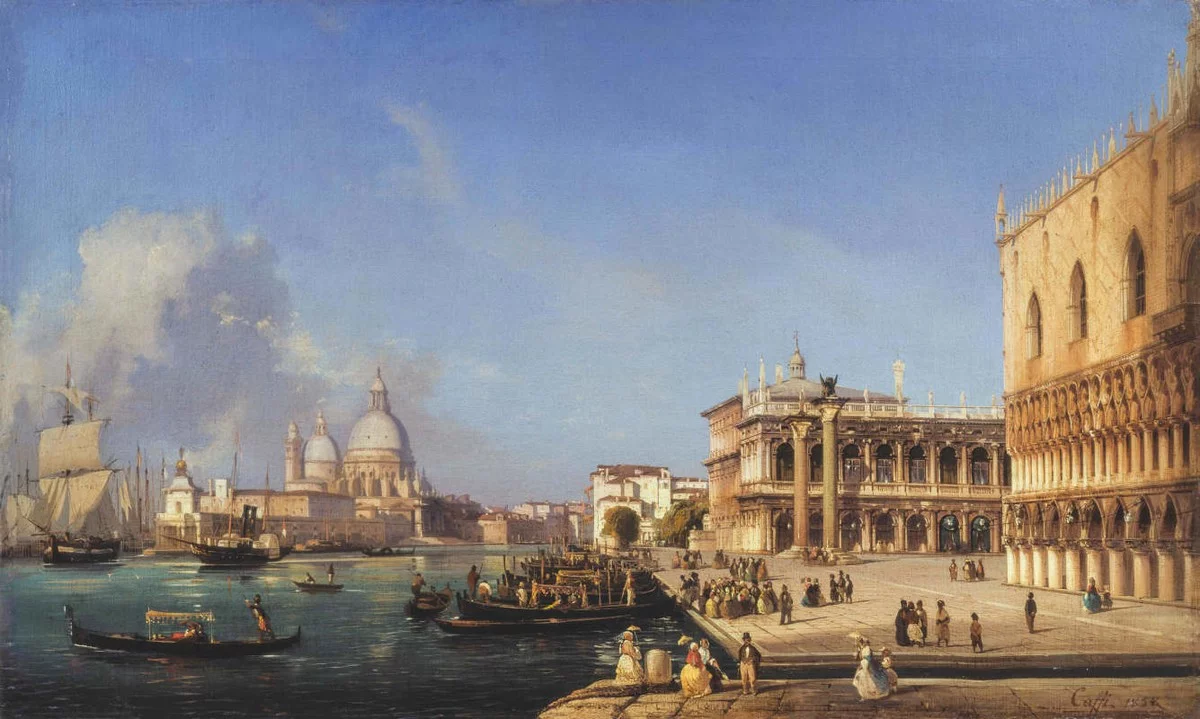
To celebrate the 1600th anniversary of the city of Venice, whose foundation has traditionally been set on 25 March of the year 421, Mets Percorsi dell'arte, the Castello Foundation and the Municipality of Novara propose the exhibition from 30 October 2021 to 13 March 2022 The myth of Venice. From Hayez to the Biennale, curated by Elisabetta Chiodini with a prestigious scientific committee directed by Fernando Mazzocca which includes Elena Di Raddo, Anna Mazzanti, Paul Nicholls, Paolo Serafini and Alessandra Tiddia.
The exhibition received the approval of the Venice 1600 Steering Committee and is part of the events related to the great exhibition at the Doge's Palace.
The starting point of the exhibition itinerary are the works of some of the greatest masters who worked in the lagoon city during the first decades of the nineteenth century, significantly influencing the development of Venetian painting in the second half of the century with their teaching and works. protagonist of the review.
Seventy works divided into eight rooms in the splendid setting of the Castello Visconteo di Novara to tell the myth of the lagoon city. Starting with the great Hayez through a rich selection of the most important works - and often never seen because they come from prestigious private collections - by the most famous Italian artists of the second half of the nineteenth century.
The first room is therefore dedicated to history painting, considered the noblest "genre" of painting, we find four important works by Francesco Hayez (1791-1882), including the splendid Venus joking with two doves (1830), Portrait di Gentildonna (1835) and the imposing Priest Orlando of Parma sent by Arrigo IV of Germany and defended by Gregory VII against the just indignation of the Roman synod (1857); alongside them works by Ludovico Lipparini (1800-1856) and Michelangelo Grigoletti (1801-1870), prominent artists and key figures in the formation of important authors of the next generation, also present in the exhibition, such as Marino Pompeo Molmenti (1819 -1894) and Antonio Zona (1814-1892).
In the second room are exhibited those authors, Venetian and non-Venetian, who more than others have gradually contributed to the transformation of the genre of the view into that of the landscape: among these the great painter Ippolito Caffi (1809-1866) with two splendid Venetian views: Festa night in San Pietro di Castello (around 1841) and Venice Palazzo Ducale (1858), Giuseppe Canella (1788-1847), Federico Moja (1802-1885) and Domenico Bresolin (1813-1899), the latter among the very first to be interested also of photography and already in 1854 indicated among the members of the Academy as a "landscape painter and photographer". Holder of the chair of Landscape since 1864, Bresolin was the first to lead young students to paint outdoors, in the lagoon as well as in the hinterland, so that they could study the effects of light and discuss the rendering of reality in a new and stimulating environment. different from what they were used to, moreover, codified by the great landscape painters of the past. Among them we remember Gugliemo Ciardi (1842-1917), Giacomo Favretto (1849-1887), Luigi Nono (1850-1918), Alessandro Milesi (1856-1945) and Ettore Tito (1859-1941), protagonists of the exhibition.
The third room is dedicated to one of the most talented and beloved Venetian landscape painters, Guglielmo Ciardi, of whom twelve works are exhibited which, as in a sort of small monographic exhibition, starting from the 1860s document the evolution of his painting up to in the early nineties. Of him the magnificent View of the Venetian lagoon (1882), image of the exhibition and other splendid canvases set in the surroundings of Venice or glimpses of the city such as the beautiful oil market in Badoere (around 1873).
In the following rooms we find enchanting works that have as their theme daily life, affections and the family dedicated to the "painting of truth": such as Il bagno (1884) by Giacomo Favretto; Alle Zattere (1888) by Pietro Fragiacomo; Morning of Sunday (around 1893) and La signorina Pegolo (1881) by Luigi Nono; Girotondo (1886) by Ettore Tito. On the world of work flow other lively and detailed works with peasants, laundresses, rice harvesters, animal sellers, festivals and markets as protagonists, such as The rice harvest in the lands of the lower Verona area (1878) and The Campo San Polo market in Venice on Saturday (1882-1883) by Giacomo Favretto; the melancholy landscape Towards evening near Polcenigo (Friuli) (1873) by Luigi Nono; Lavandaie sul Garda (1888) and Raggi di sole ((1892) by Ettore Tito. And to close this triple section of daily life, some canvases dedicated to amorous idylls, a subject halfway between genre and reality much loved and frequented by painters of the second half of the nineteenth century: to the beautiful Idyll (1884) by Luigi Nono, there are added canvases with unforgettable figures of young engaged couples by Favretto, Tito, and Alessando Milesi with another Idyll (circa 1882) and Courtship at the market (circa 1887) ).... read the rest of the article»
The seventh room is entirely dedicated to Luigi Nono and offers a focus on one of the painter's most famous works, the Refugium peccatorum. In addition to the editions of 1881 and 1883, large oil paintings, studies, drawings and other significant works of comparison are exhibited, such as Le due mothers (1886).
The eighth and last room of the exhibition is instead dedicated to the works created by the same artists between the late nineties of the nineteenth century and the early twentieth century, wide-ranging canvases that reflect the renewal and change of taste induced in Venetian painting by the direct confrontation with the figurative culture of the numerous foreign painters who participated in our International Art Biennials. The Bucintoro (c. 1902-1903) by Guglielmo Ciardi stands out; Ancient vision (1901) by Cesare Laurenti; July (1894) and Linen in the wind (around 1901) by Ettore Tito.
An exhibition, therefore, full of important and beautiful works with a very enjoyable journey that tells about Venice and the evolution of Italian painting from the mid to late nineteenth century, towards the ferments that will characterize the early twentieth century.
Title: The Myth of Venice. From Hayez to the Biennale
Opening: October 30, 2021
Ending: March 13, 2022
Organization: Fondazione Castello Visconteo Sforzesco di Novara, METS Percorsi d’arte
Curator: Elisabetta Chiodini
Place: Novara, Castello Visconteo Sforzesco
Address: Piazza Martiri della Libertà, 3 - Novara
Promoted by: Municipality of Novara
Timetables:
Tuesday - Sunday 10.00 - 19.00
The ticket office closes at 18.00
Special openings:
Monday 1st November, Wednesday 8th and Sunday 26th December,
Saturday 1, Thursday 6 and Saturday 22 January
Closed: Friday 24th, Saturday 25th and Friday 31st December
Tickets:
Full € 12.00
Reduced € 10.00
More info on this website: https://www.ilcastellodinovara.it/
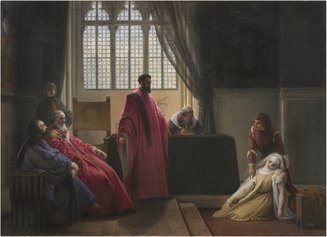
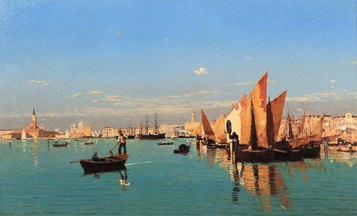
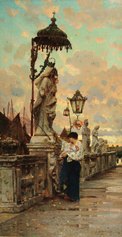
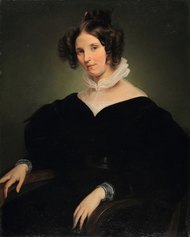
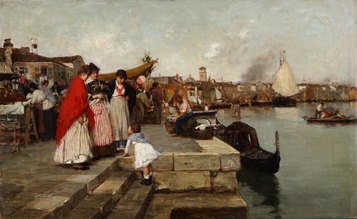
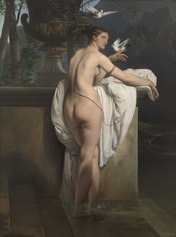
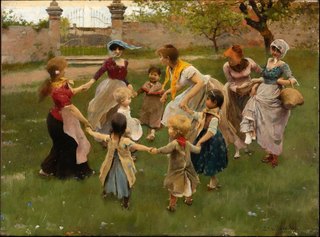
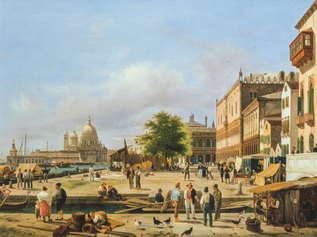
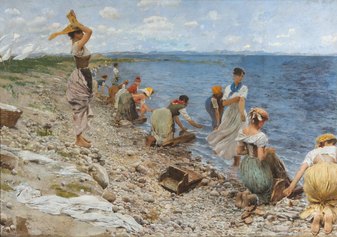
 itinerarinellarte.it è un sito che parla di arte in Italia coinvolgendo utenti, musei, gallerie, artisti e luoghi d'arte.
itinerarinellarte.it è un sito che parla di arte in Italia coinvolgendo utenti, musei, gallerie, artisti e luoghi d'arte.